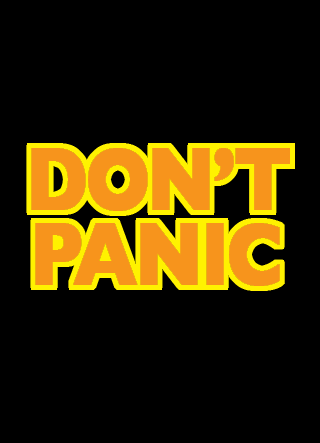Saying panic stops lives from being saved sounds like a big claim – but the numbers stack up.
When Arthur Dent first sets eyes on The Hitchhiker’s Guide To The Galaxy in Douglas Adams’ book by the same name, he isn’t comforted by the words DON’T PANIC inscribed on its cover.
Fair enough. If you’ve read the book, you’d know Arthur was in a bit of strife at the time.
Being told “don’t panic” often has the opposite effect. Think back to the toilet paper stockpiling in the early days of the COVID-19 pandemic as an example.
This video on the psychological reasons for stockpiling explains it well. “At times of anxiety or when we are uncertain about a situation, we tend to be completely irrational.”
Panic influences OHCA survival
Panic at the sight of someone experiencing a sudden cardiac arrest can hold us back from stepping in to help.
John Haines is one of Australia’s leading experts on the Survival Gap. That is, those moments between someone experiencing an out-of-hospital cardiac arrest (OHCA), and the arrival of emergency medical services (EMS).
In his previous conversation with us, John talked about the specific links in the Chain of Survival. These steps are what needs to happen to save a sudden cardiac arrest patient’s life.
The common belief is that the first link of the Chain of Survival is to recognise what is going on and call emergency services.
A better first step would be, don’t panic.
Panic is as much a barrier to saving lives from sudden cardiac arrest as CPR ignorance, defibrillator access or delayed emergency services. Panic stops lives from being saved.
Consider evidence cited by the authors of Strategies to Improve Cardiac Arrest Survival: A Time to Act. They show panic can prevent a bystander from helping someone in sudden cardiac arrest, even if that bystander is familiar with CPR.
“Panic may influence readiness to act in an emergency situation irrespective of prior CPR training. This may, in part, explain why individuals who have had a cardiac arrest are more likely to receive CPR if the arrest is witnessed by strangers as compared to friends or family members.”
The summary of this report dedicates as much space to assessing the psychological barriers to bystander intervention, as it does physical impediments like lack of training or access to AEDs (automated external defibrillators).
Related article: community first responders link in chain of survival
Panic stops rational brain function. We may be trained in CPR but, in those high-stress moments when someone has collapsed and may be experiencing a sudden cardiac arrest, panic makes that knowledge and experience inaccessible.
Over the past weeks, John Haines and other experts including Brian Haskins and Louise Dawson have all talked to us about what can be done to reduce the risk of bystander panic in a sudden cardiac arrest situation.
CPR training, ready access to easy-to-use AEDs, and emergency services responsiveness all contribute to the solution.
As RRR’s Donovan Casey says, knowing the risks, and being ready to act in the face of those risks, is the first step.



